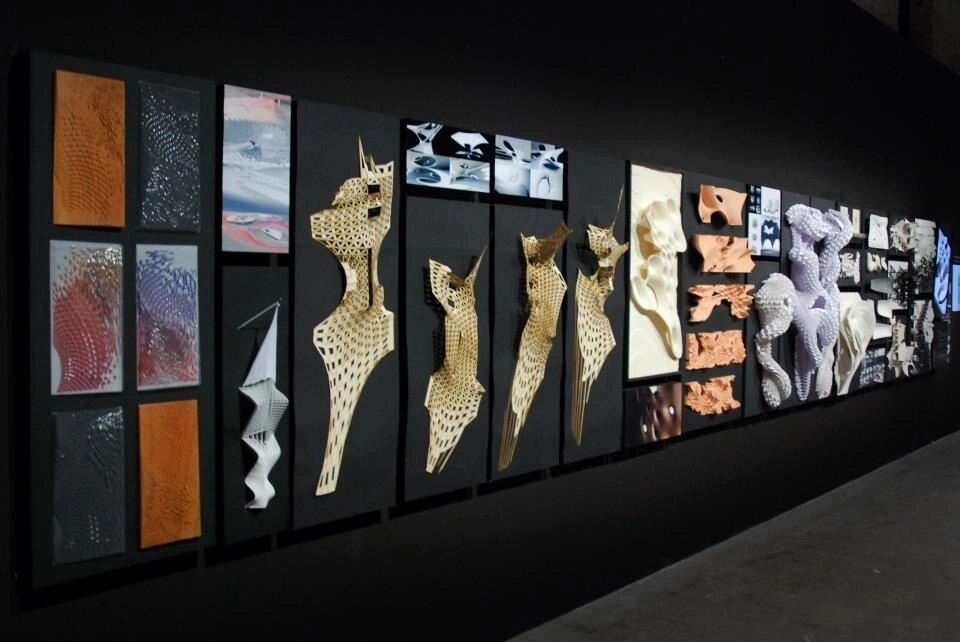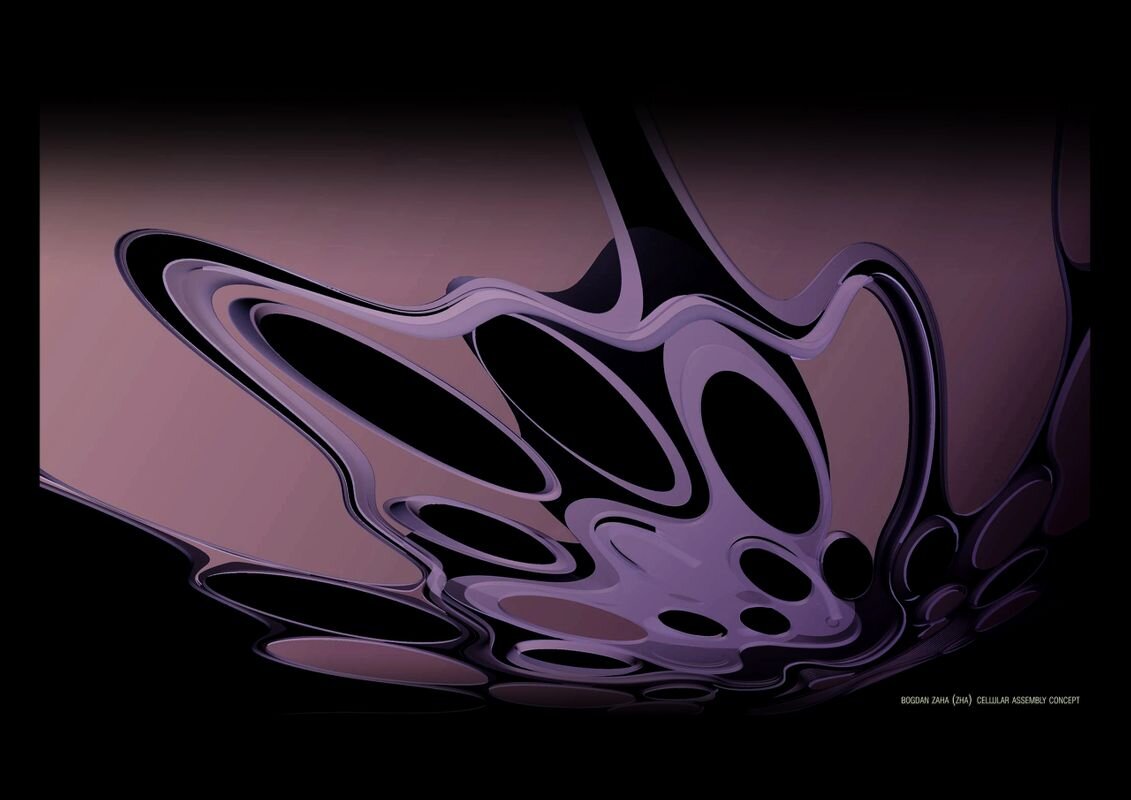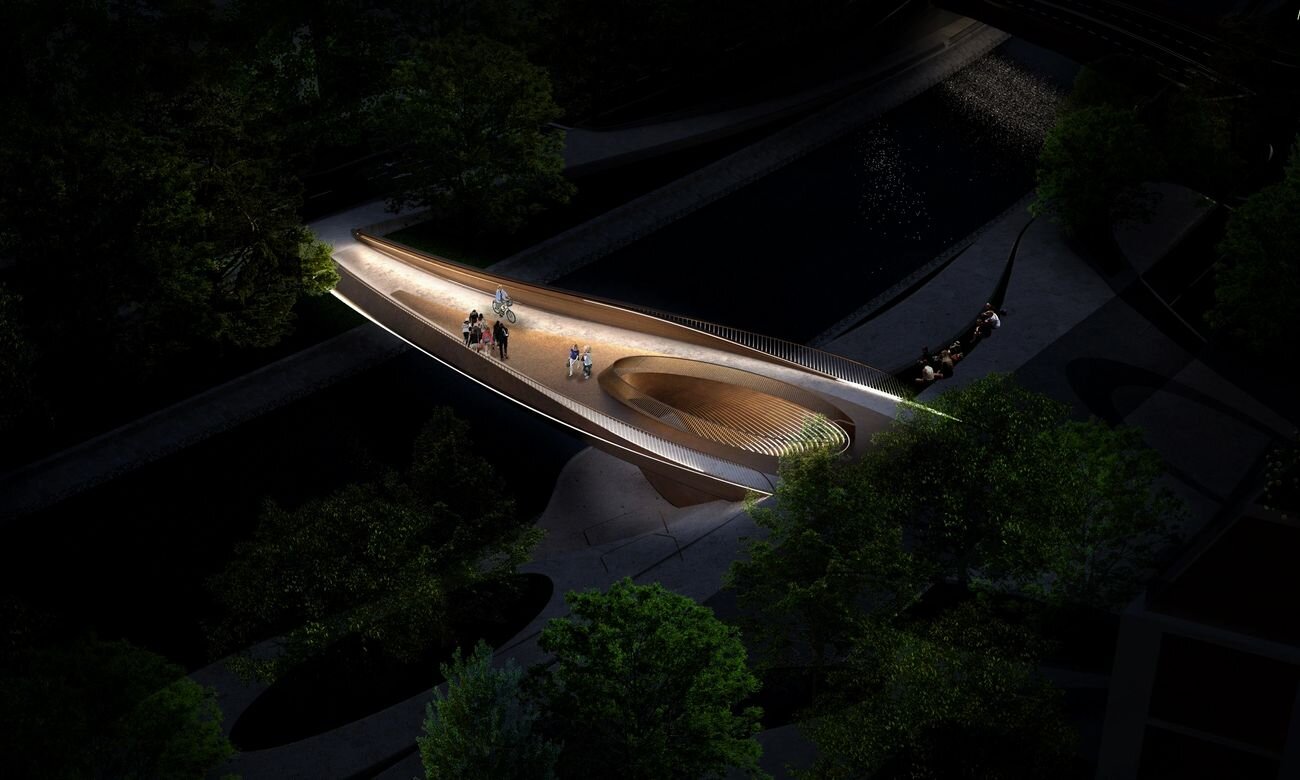BOGDAN ZAHA
RESEARCH PAPER
DECISION MAKING TOOLS IN AGENT BASED MODELLING.
AGENT BASED PARAMETRIC SEMIOLOGY (ABPS)
ABPS is a research project headed by Patrik Schumacher and conducted by Josip Bajcer, Daniel Bolojan, Robert Neumayr and Bogdan Zaha at the University of Applied Arts in Vienna, Austria between October 2016 and March 2020 and funded by the Austrian Government. This effort has been doubled by the active participation and parallel development of a design process in Zaha Hadid Architects (ZHA) by Tyson Hosmer, Mathias Fuchs, Soungmin Yu and Sobitha Ravichandran.
This research is an attempt to further the Semiological Project, a key part of Parametricism, defined by Patrik Schumacher in his “The Autopoiesis of Architecture – A New Agenda for Architecture” Vol. II. Semiotics is the field that is concerned with meaning and how the representation of language, images, objects or any other artefact can generate meaning. The Semiological dimension of architecture’s design process structures the built environment into a system of signification, where users are able to navigate and attribute social-functional meaning to each of its parts and their corresponding use-value or social-interaction types that are expected to be encountered in a particular territory.
Considering the complexities of our built environment and the endless possibilities one could tackle, the focus of this research is narrowed down to a simpler event scenario, whereby taking on an organisation’s social network and its territory of manifestation, we simulate and analyse the behaviour of a set of agents within the main social space of this organisation. In order to have an informed process and to be able to compare the simulation data to a real-world scenario, we have focused on a two-fold strategy. On the one hand, by replicating the reception and main social space of ZHA in London (BGL) we can check against collected data and build a quasi-realistic social model that then can be applied on a more Generic Space (GGS) and test its generative potential.
The Simulation Space is gradually built-up and improved with each iteration. Starting from a simple plain-field, step by step this is informed with the physical space’ actual outline, egress points, zones and destinations such as furniture and equipment. The scene is populated by agents representing the organisation population that in turn start with no capacities and slowly build-up on their cognitive ability to be affected and to affect the scene with each iteration.
There are two sets of agents to be defined and several sub-sets that can be expanded upon relative to the ever-increasing complexity potential of the system. There is no precedence or hierarchy between the two main sets as these are an intrinsic part of the system’s existence. On the one hand we have a set of environmental agents and on the other hand, an active population of agents. The environmental agents constitute the scenario and are potentiated by and actuate the organisation’s agent population. The success of the simulation relies on the ability to quantify the interaction of these two main sets as well as the interaction within the agent population and offer a qualitative measurement on the potential improvement of these interactions. A further functional subdivision of the environmental agents is made in order to differentiate functional zones as well as a further differentiation of the agent population into teams and employees or visitors is made in order to achieve a more varied and subtle and nuanced interaction capacity.
In order to recreate the complex social networks of real-world corporate scenarios, we have initially started our research by searching for an appropriate tool set that could deliver the best representation and measurable qualities of these interactions. There is a systematic improvement of how social networks are being represented and depicted in relation to social arrangements such as organisations. The goal of our research is to link the potential of social networks and semiotics. The representation capacities of both semiotics and social networks have great physical representation potential. We are looking into physically mapping the interaction patterns that arise from the social network scenarios we build that rely on infusing agents with cognitive capacities and semiotic qualities. These physical mappings would then become the basis for creating new territories that would inform a second set of simulations. These would eventually transform into a base for employing machine learning to train prediction algorithms and reduce the heavy cost of real-time simulation.
There are a great number of agent-based simulation engines and we have investigated a few of them in order to find the most appropriate tool for this case-study. We started with Basefount Miarmy, Netlogo, Unity and Unreal Engine. While Miarmy and Unreal were both using Decision Trees, Unity’s expanded capacity for external input and a greater flexibility in creating more complex Ai by using Behaviour Trees with Behaviour Designer constituted a better way forward. Netlogo being the only non-comparable software as this was considered to be a scientific tool, for its use of raw scripting and its links to biology research where it was successfully deployed in complex agent simulations. Thus, we have decided to keep it as a safety measure, through which we would then verify the accuracy of the gaming engine simulations.
Miarmy - Agent Perception Content parameters
The Agents Ai was generated by imposing our methodology onto Unity’s plug-in Behaviour Designer and creating goal-oriented behaviour trees. Behaviour Designer is a behaviour tree implementation plug-in. This is designed to create complex Ai’s from readymade tasks and allowing to create new ones in its visual graph editor or with an additional scripting integration where new actions or modifying existing ones can be made. These behaviour trees can be nested and become complex actions of ever more complex main trees. The difficulty of creating complexity is relevance and controlling excess. By gradually increasing this complexity and always evaluating the outcome against real-world values made progress possible. Agents would start with a complete lack of cognition, meaning they would run across an empty field being able to randomly walk across and through other agents. They would gradually achieve a greater capacity across simulation complexity increases. Eventually they would not only be able to recognise each other and avoid obstacles or interact with objects within the scene according to their functionality but also, eventually be able to influence each other across teams depending on their social alignment values and “attractiveness” ranges. By using a brief generated social network setup where teams would be made up of differentiated agents that would eventually have certain affinities or “stamina” values we could use our simulations to alter and evolve that network through agents’ interactions throughout simulations. The agents would then have the capacity to inform each other and change their attractiveness by who they would socialise with and for how long.
Behaviour Designer Graph Editor – Behaviour Tree example
The scenario build-up was structured as a two-fold approach. There is a great importance in increasing complexity, but in the same time, a great importance in achieving consistency. Each scenario would consist of four variations simulated in both Unity, Netlogo and an R prediction. These scenarios increase in complexity would be called ACL’s or Agent Capacity Levels.
Agent Capacity Level Matrix
In each ACL the agents would gain more cognitive abilities and an increased amount of scene information to interact with. Our scene would eventually be a quasi-real representation of the real-world scenario of the ZHA BGL reception social space. We would eventually be able to simulate the interactions that would normally be likely to occur in this space and to compare the usage patterns to those revealed by the actual surveillance of the real-world space by mot-cams.
The two outputs that were used to quantify the occupancy model are tracing the agent movements within the scene in the form of a trail map and heatmap. The trail map is showing the movement of each agent within the scene for the entire duration of the simulation, while the heatmap shows the usage pattern as an intensity or density map, revealing where the agents have spent the most amount of time during the simulation runtime. The latter was eventually used to compare to the mot-cam data, Netlogo occupancy map and prediction algorithm for similarity reasons.
As a further step in this research the next step is to inform the architectural elements with meaning, such that this becomes a truly Semiological investigation.
– London, 20.07.16, Bogdan Zaha, BZ
BIOGRAPHY
Bogdan Zaha is a Lead Architect at Zaha Hadid Architects. After a number of years of work in Romania and Austria, after graduating from the Studio Zaha Hadid at the University of Applied Arts in Vienna, Bogdan joined Zaha Hadid Architects in 2014. Bogdan is part of the office’s design team and has worked on a significant number of projects such as Alai Residential complex in Mexico, Beijing New Airport, Central Business District in Prague and many other projects and competitions around the world including; a tower in New York, a Business District in Frankfurt, and the Heathrow Terminal 6 in London. He has worked on many project stages with a focus on parametric modelling and advanced geometrical design methodologies.
Bogdan is a Research and PhD Fellow at the University of Applied Arts in Vienna, has been teaching at the University of Innsbruck in Austria and the Architectural Association in London. He has been teaching a great number of workshops focused on computation Design and Parametric Architecture in Romania, Austria and Italy.
Bogdan has studied at the Ion Mincu University in Bucharest and the Faculty of Architecture in Timisoara, Romania before studying and graduating from the University of Applied Arts’ Studio Zaha Hadid in Vienna where he is currently a PhD research fellow.



















